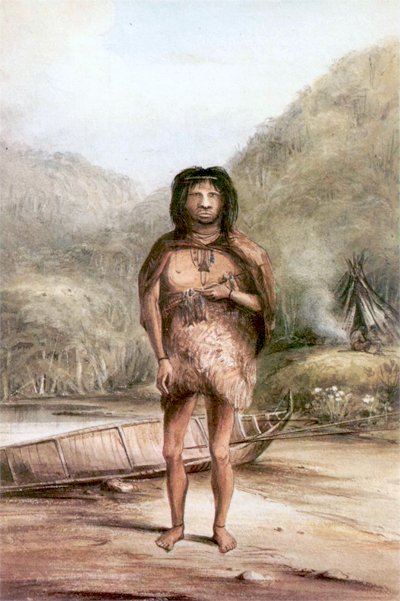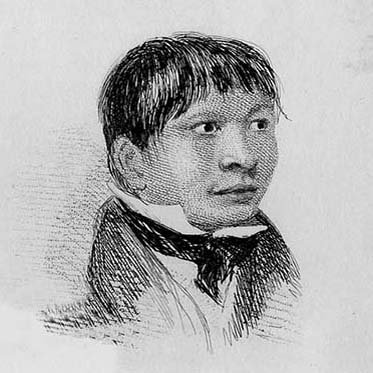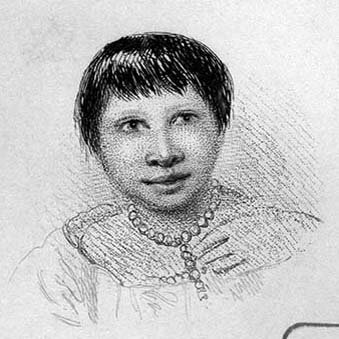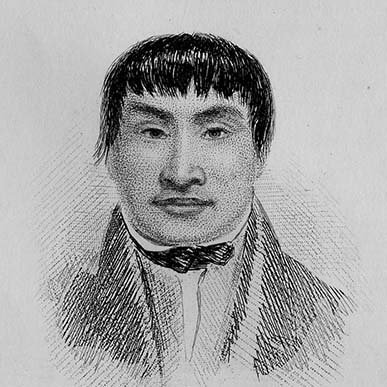Camdens in the Global South
There are occurrences of the Camden place name across Africa, Asia, South America and the Caribbean, though the reason for some of these has not yet been established.
Africa
Camden, Mpumalanga, SOUTH AFRICA
Camden Power Station, South Africa . Photo: JMK (Creative Commons, 2017)
Suburb of Nucam, Gert Sibande; elevation 1,653 m / 5,423 ft
The province of Mpumalanga lies in eastern South Africa, bordering Eswatini and Mozambique. In the Swazi, Xhosa, Ndebele and Zulu languages, its name means ‘The Place Where the Sun Rises’ (i.e. the East). The coal-fired Camden Power Station, commissioned in 1967, was mothballed in 1990. South Africa's energy crisis in the early 21st century prompted its recommission from 2005. Its four chimneys are 152.4 m (500 ft) tall.
Camden, ZIMBABWE
There is a farm called Camden in the Midlands Province of Zimbabwe.
Asia
Camden Park, SINGAPORE
Upmarket residential neighbourhood in Novena, District 11
Numerous place names in the former Crown Colony derive are borrowed from British towns and cities. A local street-name expert states that Camden Park “was named in 1949 after Camden, a town in South East England”, presumably meaning the Camden Town district in London. Source: Ng Yew Peng, What’s in the Name?: how the streets and villages in Singapore got their names (2017).
The Caribbean
Camden, Couva, TRINIDAD
Heliport at Camden Base, Couva, Trinidad
A sugar plantation at Couva was owned, with 210 enslaved people in 1813, by William Lushington, Alderman of, and Member of Parliament for, the City of London (1795-1802). He lived at the time at Camden Place, Chislehurst, let to him by the 2nd Earl Camden during his absence in Ireland as Lord Lieutenant. Lushington, who had made money in Asia, was to lose it in the Caribbean, where besides Camden he owned another plantation in Trinidad, and others in Mustique and in Grenada (for which he was the London agent).
Camden Base, at Couva, was established as a wartime emergency airstrip, defended by United States Army infantry and AAA units. It is currently a commercial heliport.
Camden Park, St Andrew, ST VINCENT
A populated place in Saint Vincent, a little northwest of Kingstown, the country's capital city.
South America
Islas Camden, Tierra del Fuego, CHILE
The Southernmost tip of South America
An Island group in western Tierra del Fuego. Tierra del Fuego is a sparsely populated archipelago at the southern-most tip of South America, split since 1888 between Chile and Argentina. It consists of one large island and countless smaller islands to the south. Much of the region is a wilderness of snowy mountains (including the Darwin Range), glaciers, dense forests, glacial lakes and fjords. The inhospitable climate is characterised by rain and strong winds, the temperature rarely exceeding 9 degrees Celsius. The main industries today are fishing, oil and natural gas extraction, and ecotourism.
The first European visitor, sailing for the Spanish Crown in 1520, was the Portuguese explorer Ferdinand Magellan. The name of Tierra del Fuego (or Land of Fire) stemmed from his sightings of the many beach bonfires lit by the indigenous people. Captain James Cook visited twice (in 1769 and 1774), as later did HMS Beagle, on the second occasion with Charles Darwin on board. Many Fuegian geographical features have ‘British’ names given them by early explorers or missionaries, and since incongruously part-Hispanicised.
The Camden Islands (Islas Camden), to the far left on the map, lie on Tierra del Fuego’s Pacific coast off the Brecknock Peninsula and separated from it by the Brecknock Passage (Paso Brecknock). Earl of Brecknock (in Wales) was the subsidiary title of John Jeffreys Pratt, 1st Marquess Camden. The largest island in the group is London Island (Isla London), on whose east side is a body of water called Pratt Passage (Paso Pratt). A peak on Isla London, called Mount San Paulo, took its name from St Paul’s Cathedral in London, which it was said to resemble when viewed from a distance. Coincidentally, the land inherited by the 1st Earl Camden, on which he developed London’s Camden Town, was leased from the cathedral.
The Camden Islands were very likely named around 1830 by the hydrographer and surveyor Robert FitzRoy, who explored Tierra del Fuego during both voyages of HMS Beagle, which he commanded. FitzRoy was a great-nephew of Marquess Camden, whose sister Frances was his maternal grandmother. Many Fuegian locations were chosen by Captain FitzRoy, some of them naval: e.g. Thetis Bay, named after his previous ship, and Sloggett Bay after its purser; the Beagle Channel for obvious reasons, and the Murray Narrows after the Beagle’s bosun. Many other place names derived from the titles of FitzRoy’s aristocratic relations: Londonderry Island his maternal grandfather, Stewart Island from his mother, Cape Castlereagh from an uncle, and O’Brien Island from the family of FitzRoy’s wife. His paternal grandfather was Augustus FitzRoy, the 3rd Duke of Grafton (sometime British prime minister), hence the Grafton Islands, and Euston Bay (Bahia Euston) named after his Suffolk stately home. The FitzRoy family also owned a large estate in what is now the London Borough of Camden; in Camden Town it adjoined the property of Marquess Camden. The names Fitzroy, Grafton and Euston are familiar in Camden as the eponyms of multiple streets and squares, and the district now known as Fitzrovia indirectly owes its name to the FitzRoy family. Euston Station is one of London’s main railway termini.
The story of Yokcushlu, Elleparu, Boat Memory and Orundellico
Picture of a Fuegian, by Conrad Martens, artist on board The Beagle
For three weeks in early 1830, HMS Beagle (towards the end of its first voyage) was moored in Pratt Passage, in the Camden Islands, sheltering from a ferocious gale. FitzRoy sent a party of men eastward on a surveying expedition. As they camped overnight in a cove on a neighbouring island, their whaleboat was stolen by Alakaluf people. The Alakaluf (or Kkawésqar) were one of several distinct Fuegian tribes. Nomadic canoe people, they paddled their canoes between islands, living in wigwams, subsisting mostly on sea-fish and shellfish, and sometimes hunting seals or penguins .
To return to the Beagle, the stranded sailors made a sort of coracle, using the branches of trees and fabric from their tent. FitzRoy disparagingly referred to it as a “basket”, and the island where the whaleboat was lost is called Isla Basket to this day. The captain and other crewmen set out in search of their invaluable missing boat. Some of its gear was found but the culprits had vanished. Eleven Alakaluf, mostly women and children, were captured and taken aboard the Beagle as hostages, to be released if the boat was returned. Leaving Pratt Passage, the ship set sail south-eastward, weaving among the Pacific-coast islands in pursuit of the thieves. By early March, most of the hostages had escaped or been released. The only Alagaluf left on board was a 9-year-old girl called Yokcushlu. Captain FitzRoy found her the most happy and healthy and wanted to teach her English. The crew renamed her Fuegia Basket.
Three more Fuegians were abducted by Captain FitzRoy so that they could act as intermediaries between the English and indigenous peoples. On 3 March 1830, while anchored off Waterman Island, the Beagle was approached by a canoe full of Alakaluf. Sensing an opportunity to take another hostage, Fitzroy lowered a boat and invited Elleparu, a man in his mid-twenties, to join him. Having initially boarded the Beagle voluntarily, the young man is reported as being sullen except when with Yokcushlu. Elleparu was renamed York Minster (or York for short), after a nearby headland so named earlier by Yorkshireman Captain Cook, as it resembled the twin towers of the cathedral. Traces of a sounding-line from the missing boat were found on Whittlebury Island (named after a FitzRoy family property inNorthamptonshire, as was an erstwhile street in London on the site of Euston Station). Found nearby and seized was an Alakaluf man, aged about 20 and described by FitzRoy as “the best-featured Fuegian” he had seen, “a very favourable specimen of the race”. His real name unknown, he was renamed Boat Memory.
Later, FitzRoy and his crew were exploring the 150-mile-long Beagle Channel, ‘discovered’ by the Beagle bosun, Matthew Murray. On 11 May, the explorers were approached by indigenous locals keen to barter beads and buttons for fish. FitzRoy recalled: “I told one of the boys to come into our boat and gave the man who was with him [an uncle?] a large shining mother-of-pearl button. The boy got directly into my boat and sat down. Seeing him and his friends seem quite contented, I pulled onwards.” The boy was Orundellico, aged 13 or 14 and one of the Yahgan (or Yámana) canoe people of southern Tierra del Fuego; he therefore spoke a different language to that of FitzRoy’s other captives. He was renamed James (or Jemmy) Button, after the button that had changed hands.
The lost boat was no longer an issue, and the captives were no longer to be used as hostages. They were now to be part of a social experiment dreamt up by FitzRoy. They would be taken to England to be educated and ‘civilised’, and then returned to their homeland to serve as role models for the Fuegians and interpreters for passing British ships. FitzRoy claimed they were happy with the arrangement. The Beagle carried the foursome to England, well treated and dressed as sailors. During a stopover in Montevideo, they were vaccinated against smallpox. On reaching the Cornish coast, Yockushlu was terrified at the sight of steamship in Falmouth Harbour. Landing in Plymouth, the Fuegians were placed in the naval hospital there for revaccination, whereupon Boat Memory, sadly, died.
The three surviving Fuegians were taken by stagecoach to London and on to Walthamstow (now a northeastern suburb), to be supervised by Rev. William Wilson, the local vicar. Enrolled in the parish’s pioneering infant school, and boarding with the schoolmaster and his wife, the trio were taught English, something of Christianity and practical skills such as gardening, husbandry and carpentry. The two younger Fuegians made good progress, but the adult Elleparu disliked being taught with the infants. Orundellico (Jemmy Button) loved his European clothes, always wore gloves and became something of a ‘dandy’. Popular with the locals, the Fuegians were taken by FitzRoy to visit both his aristocratic relatives and ‘men of science’. Becoming minor celebrities. they were presented at St James’s Palace to King William IV. Queen Adelaide gave Yokcushlu (known as Fuegia) one of her bonnets, a ring, and some money to buy clothes for when she returned to her homeland.
After less than a year, FitzRoy decided to take the Fuegians home. Perhaps because he had spent a good deal on them or perhaps because Elleparu was reported to have sexually abused Yokcushlu. FitzRoy was simultaneously appointed to command the Beagle on its second voyage, to Tierra del Fuego and on around the world. On 27 December 1831, the ship set sail, with the Fuegians on board, along with a young naturalist called Charles Darwin. On the voyage, as a 19th-century response to events, Yokcushlu was married to Elleparu. Yokcushlu had an aptitude for languages and learnt some Potuguese and Spanish during landfalls en route in Rio and Montevideo.
Back in Tierra del Fuego, FitzRoy reunited Orundellico with his mother, who had been distraught when he had been kidnapped, and whose husband had died in his son’s absence. A young missionary who had accompanied the returnees on the voyage, meaning to help them found a mission, could not cope with culture shock and was quickly returned to the Beagle. When, after 18 months, FitzRoy returned to check up on Orundellico, or Jemmy, he found he had recovered his own lifestyle, living naked apart from a loincloth, now emaciated and with long hair. Orundellico had made presents for the Beagle crew and for his Walthamstow schoolmaster. Having almost forgotten his native language while away, he continued to speak English, and hung on to his Jemmy Button nickname. He declined an offer to take him back to England, perhaps, as Darwin put it, because of his “very nice wife”. He was much later accused of leading a “massacre” of eight missionaries, but was judged to be innocent at a subsequent enquiry. Jemmy died during an epidemic in 1864. He had had two wives and three children, one of whom, called Mamashtagadagunges and renamed Threeboys, was taken by missionaries to England, spending a short time on a farm there with three other Yahgan boys.
Deposited by FitzRoy in Yahgan territory in 1831, Yokcushlu (Fuegia) and Elleparu (York Minster) travelled west to their Alagaluf homeland. Yokcushlu had two of his children before he was killed in retaliation for a man’s murder. In 1883, a missionary landed on London Island, to learn that ‘Fuegia Basket’ was dying. Comforted by her daughter, Yokcushlu died, poor and frail and aged about 62, on Ilsa London in the Camden Islands, where the whole saga began.
Major source: Anne Chapman, European encounters with the Yamana people of Cape Horn, before and after Darwin (2010)






